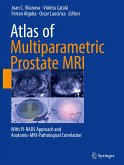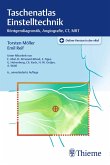This clinically oriented book will familiarize the reader with all aspects of the diagnosis of tumors and other disorders of the pituitary gland by means of magnetic resonance imaging (MRI). The coverage includes acromegaly, Cushing's disease, Rathke cleft cysts, prolactinomas, incidentalomas, nonsecreting adenomas, other lesions of the sellar area, hypophysitis, and central diabetes insipidus. Normal radiologic anatomy and the numerous normal variants are described, and guidance is also provided on difficulties, artifacts, and other pitfalls. The book combines concise text and high-quality images with a question and answer format geared toward the needs of the practitioner. MRI is today considered the cornerstone in the diagnosis of diseases of the hypophyseal-hypothalamic region but the relatively small size of the pituitary gland, its deep location, the many normal anatomic variants, and the often tiny size of lesions can hinder precise evaluation of the anatomic structures and particularly the pituitary gland itself. Radiologists and endocrinologists will find MRI of the Pituitary Gland to be full of helpful information on this essential examination, and the book will also be of interest to internists and neurosurgeons.
Hinweis: Dieser Artikel kann nur an eine deutsche Lieferadresse ausgeliefert werden.
Hinweis: Dieser Artikel kann nur an eine deutsche Lieferadresse ausgeliefert werden.
"Reading this book and studying the many excellent illustrations has reinvigorated my interest in pituitary disease ... . I would recommend this book as a reference text for any department undertaking a significant volume of pituitary imaging and as essential reading for any practicing neuroradiologist or trainee who wishes to consolidate or advance their knowledge of pituitary MRI. No doubt endocrinologists and pituitary surgeons would also find it of value." (Dr. Chris Rowland Hill, RAD Magazine, August, 2017)
"Professor Bonneville should be congratulated on a legacy text that stands as testimony to his academic career. His contribution will continue to teach and inspire endocrinologists and neuroradiologists throughout their careers for years to come." (Richard Aviv, Radiology, Vol. 284 (2), 2017)
"This image-rich book provides a focused discussion on MRI imaging of the normal and abnormal pituitary gland. ... it is most appropriate for neuroradiologists whowill interpret these studies on a routine basis. Endocrinologists may also benefit from the images, as they often review studies on their patients. ... The most impressive feature is the excellent quality of the images, which demonstrate the findings well and are appropriately labeled." (Tara Catanzano, Doody's Book Reviews, August, 2016)
"Professor Bonneville should be congratulated on a legacy text that stands as testimony to his academic career. His contribution will continue to teach and inspire endocrinologists and neuroradiologists throughout their careers for years to come." (Richard Aviv, Radiology, Vol. 284 (2), 2017)
"This image-rich book provides a focused discussion on MRI imaging of the normal and abnormal pituitary gland. ... it is most appropriate for neuroradiologists whowill interpret these studies on a routine basis. Endocrinologists may also benefit from the images, as they often review studies on their patients. ... The most impressive feature is the excellent quality of the images, which demonstrate the findings well and are appropriately labeled." (Tara Catanzano, Doody's Book Reviews, August, 2016)








